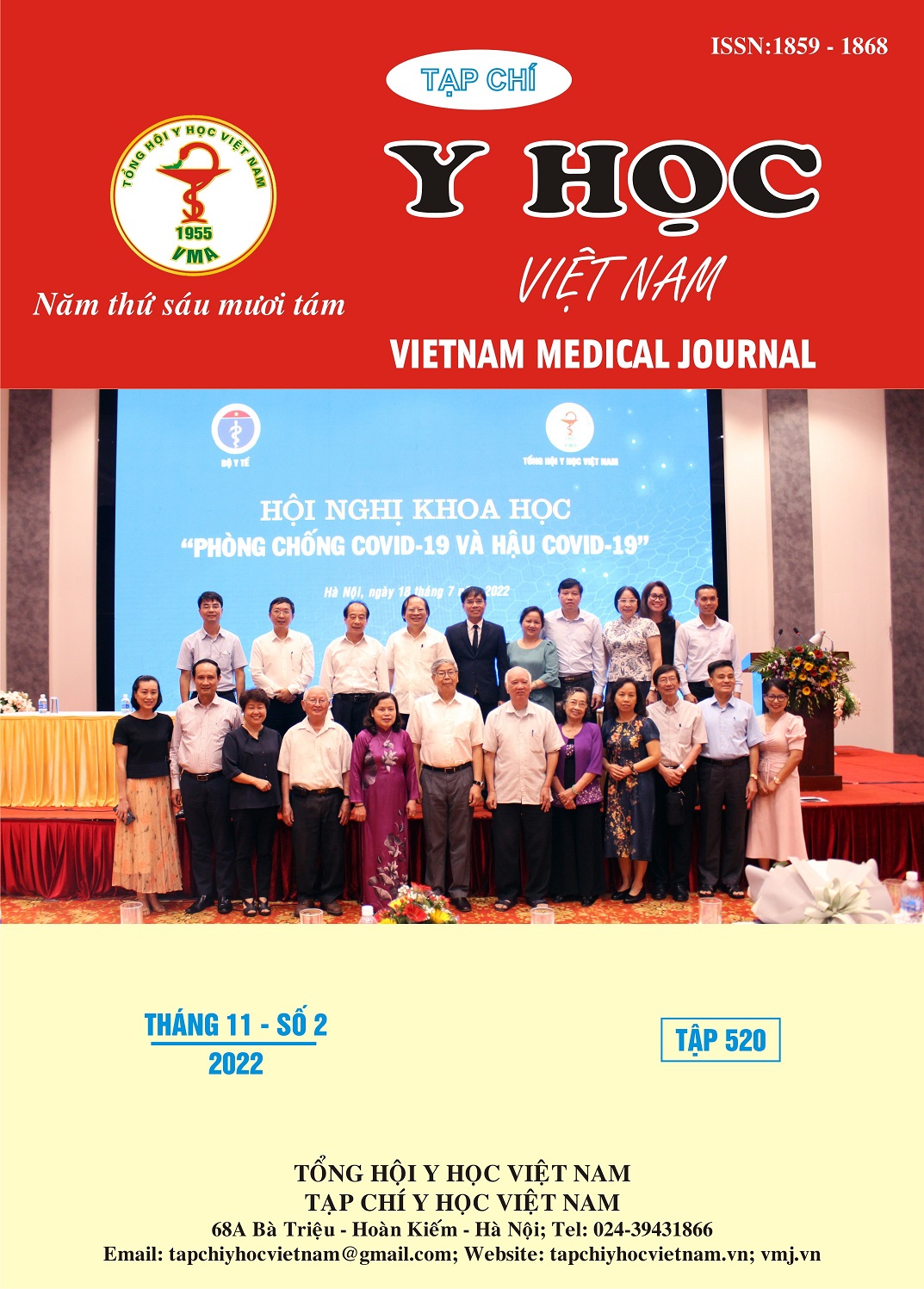INCIDENCE, RISK FACTORS AND EFFECTS ON POST-OPERATIVE PROGRESSION IN ADULTS UNDERGOING OPEN HEART SURGERY
Main Article Content
Abstract
Objectives: Investigating the incidence, risk factors and predictive values right ventricular systolic dysfunction (RVSD) in adult patients undergoing open heart surgery. Method: Retrospective observational was conducted in adult patients undergoing open heart surgery at the Cardiovascular Center, University Medical Center Ho Chi Minh City from August 2019 to May 2021. Results: The study recruited 105 patients. Patients with 3 criteria of RVSD was of 29.5%, whereas 87.6% of patients showed reduced tricuspid annular plane systolic excursion. The independent risk factors of postoperative RVSD included preoperative RVSD, atrial fibrillation, anticoagulation therapy, tricuspid regurgitation severity, preoperative right ventricular end diastolic area. RVSD increased the severity indicators in postoperative intensive care period such as prolonged vasoactive and inotropic support time, mechanical ventilation time, intensive care and hospital stay. Conclusion: RVSD was commonly encountered in adult patients undergoing open heart surgery and indicated higher severity in postoperative period.
Article Details
Keywords
Right ventricle, right ventricular systolic dysfunction, heart surgery, intensive care.
References
2. Lê Minh Khôi, Phan Vũ Anh Minh, Phan Văn Thuận và cộng sự. Rối loạn chức năng thất phải trên siêu âm tim ở bệnh nhân mắc hội chứng suy hô hấp cấp tiến triển. Y học thành phố Hồ Chí Minh. 2020; 24(2):176-182.
3. Bootsma IT, de Lange F, Koopmans M, et al. Right Ventricular Function After Cardiac Surgery Is a Strong Independent Predictor for Long-Term Mortality. J Cardiothorac Vasc Anesth. 2017; 31(5):1656-1662.
4. Costachescu T, Denault A, Guimond JG, et al. The hemodynamically unstable patient in the intensive care unit: hemodynamic vs. transesophageal echocardiographic monitoring. Crit Care Med. 2002; 30(6):1214-1223.
5. Haddad F, Couture P, Tousignant C, et al. The right ventricle in cardiac surgery, a perioperative perspective: I. Anatomy, physiology, and assessment. Anesth Analg. 2009; 108(2):407-421.
6. Haddad F, Denault AY, Couture P, et al. Right ventricular myocardial performance index predicts perioperative mortality or circulatory failure in high-risk valvular surgery. J Am Soc Echocardiogr. 2007; 20(9):1065-1072.
7. Lang RM, Badano LP, Mor-Avi V, et al. Recommendations for cardiac chamber quantification by echocardiography in adults: an update from the American Society of Echocardiography and the European Association of Cardiovascular Imaging. J Am Soc Echocardiogr. 2015; 28(1):1-39.
8. Maslow AD, Regan MM, Panzica P, et al. Precardiopulmonary bypass right ventricular function is associated with poor outcome after coronary artery bypass grafting in patients with severe left ventricular systolic dysfunction. Anesth Analg. 2002; 95(6):1507-1518.


